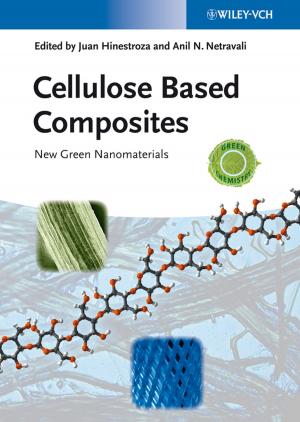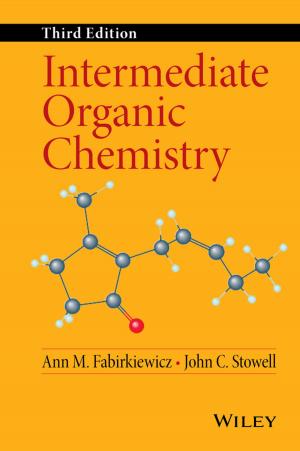Protecting-Group-Free Organic Synthesis
Improving Economy and Efficiency
Nonfiction, Science & Nature, Science, Chemistry, Physical & Theoretical| Author: | ISBN: | 9781119295228 | |
| Publisher: | Wiley | Publication: | May 25, 2018 |
| Imprint: | Wiley | Language: | English |
| Author: | |
| ISBN: | 9781119295228 |
| Publisher: | Wiley |
| Publication: | May 25, 2018 |
| Imprint: | Wiley |
| Language: | English |
Presents a comprehensive account of established protecting-group-free synthetic routes to molecules of medium to high complexity
This book supports synthetic chemists in the design of strategies, which avoid or minimize the use of protecting groups so as to come closer to achieving an “ideal synthesis” and back the global need of practicing green chemistry. The only resource of its kind to focus entirely on protecting-group-free synthesis, it is edited by a leading practitioner in the field, and features enlightening contributions by top experts and researchers from across the globe.
The introductory chapter includes a concise review of historical developments, and discusses the concepts, need for, and future prospects of protecting-group-free synthesis. Following this, the book presents information on protecting-group-free synthesis of complex natural products and analogues, heterocycles, drugs, and related pharmaceuticals. Later chapters discuss practicing protecting-group-free synthesis using carbohydrates and of glycosyl derivatives, glycol-polymers and glyco-conjugates. The book concludes with a chapter on latent functionality as a tactic toward formal protecting-group-free synthesis.
- A comprehensive account of established protecting-group-free (PGF) synthetic routes to molecules of medium to high complexity
- Benefits total synthesis, methodology development and drug synthesis researchers
- Supports synthetic chemists in the design of strategies, which avoid or minimize the use of protecting groups so as to come closer to achieving an “ideal synthesis” and support the global need of practicing green chemistry
- Covers a topic that is gaining importance because it renders syntheses more economical
Protecting-Group-Free Organic Synthesis: Improving Economy and Efficiency is an important book for academic researchers in synthetic organic chemistry, green chemistry, medicinal and pharmaceutical chemistry, biochemistry, and drug discovery.
Presents a comprehensive account of established protecting-group-free synthetic routes to molecules of medium to high complexity
This book supports synthetic chemists in the design of strategies, which avoid or minimize the use of protecting groups so as to come closer to achieving an “ideal synthesis” and back the global need of practicing green chemistry. The only resource of its kind to focus entirely on protecting-group-free synthesis, it is edited by a leading practitioner in the field, and features enlightening contributions by top experts and researchers from across the globe.
The introductory chapter includes a concise review of historical developments, and discusses the concepts, need for, and future prospects of protecting-group-free synthesis. Following this, the book presents information on protecting-group-free synthesis of complex natural products and analogues, heterocycles, drugs, and related pharmaceuticals. Later chapters discuss practicing protecting-group-free synthesis using carbohydrates and of glycosyl derivatives, glycol-polymers and glyco-conjugates. The book concludes with a chapter on latent functionality as a tactic toward formal protecting-group-free synthesis.
- A comprehensive account of established protecting-group-free (PGF) synthetic routes to molecules of medium to high complexity
- Benefits total synthesis, methodology development and drug synthesis researchers
- Supports synthetic chemists in the design of strategies, which avoid or minimize the use of protecting groups so as to come closer to achieving an “ideal synthesis” and support the global need of practicing green chemistry
- Covers a topic that is gaining importance because it renders syntheses more economical
Protecting-Group-Free Organic Synthesis: Improving Economy and Efficiency is an important book for academic researchers in synthetic organic chemistry, green chemistry, medicinal and pharmaceutical chemistry, biochemistry, and drug discovery.















